Microscopic Flowers Blooming in Harvard's Lab
While studying diverse and complex structures found in nature, such as coral reefs, Harvard School of Engineering and Applied Sciences post-doctoral fellow Wim L. Noorduin and his colleagues produced some remarkable images from a barium carbonate (salt) solution and an electron microscope.
By dissolving two chemicals in water and manipulating the growing compound's environment, the structures produced start to resemble flowers; ranging from roses to petunias to tulips.
"Just by taking the lid off of the beaker, adding a drop of acid, or mixing in some kitchen salt, can already give completely different shapes," says Noorduin. While the work is mainly a fundamental study on how minerals assemble themselves, the structures themselves would look good at any place setting.
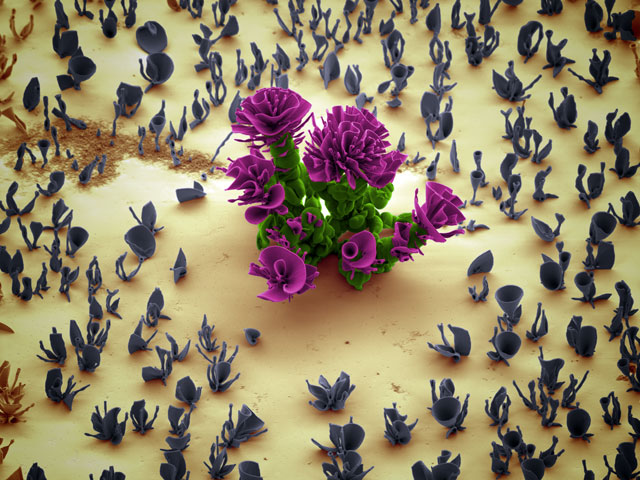
Cactus Flower, Wim Noorduin
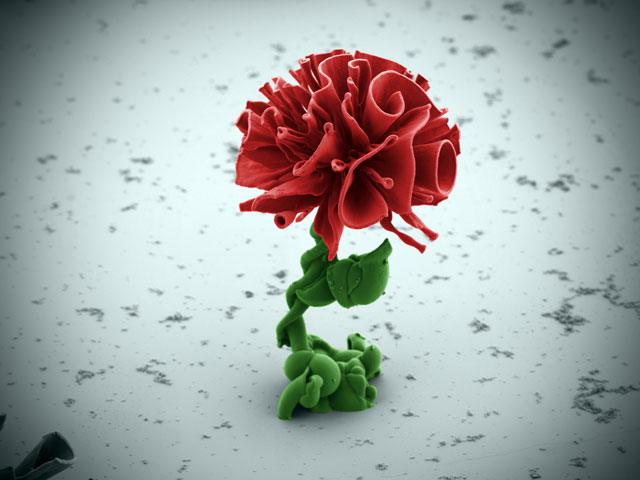
Rose, Wim Noorduin

Iris - Wim Noorduin
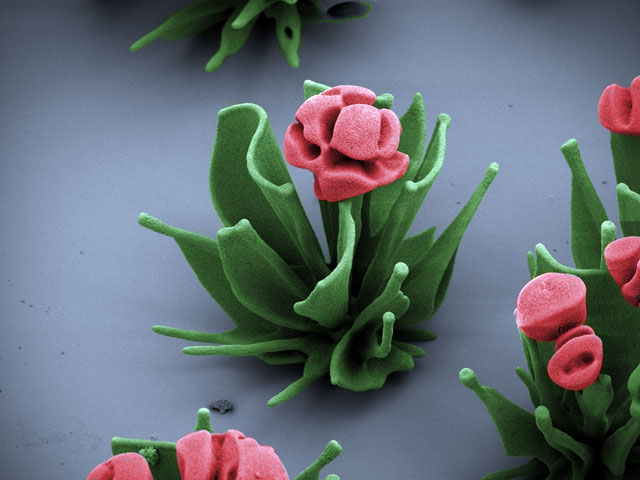
Rose Bud - Wim Noorduin
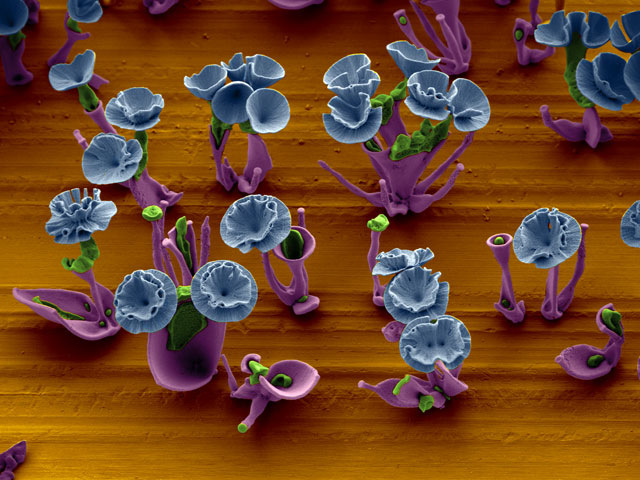
Pansies - Laura Hendriks/Wim Noorduin

Tulips - Wim Noorduin
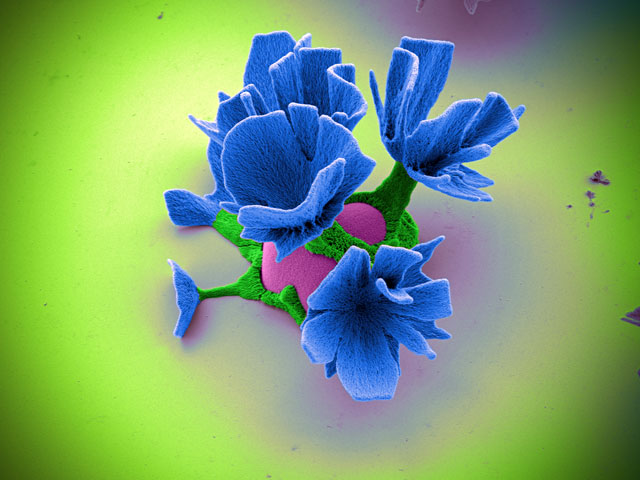
Petunia - Wim Noorduin
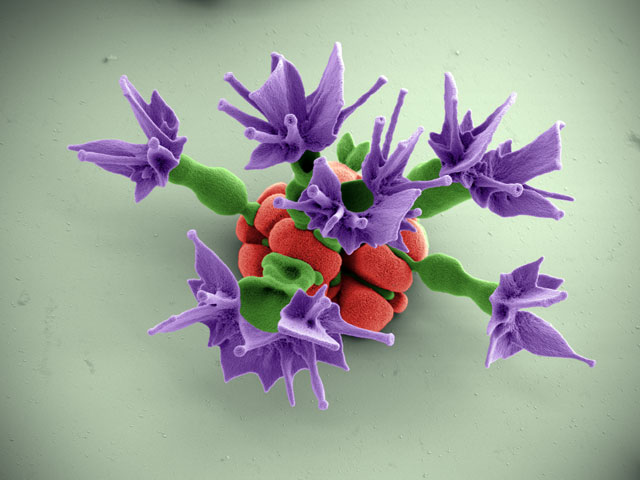
Lilies - Wim Noorduin
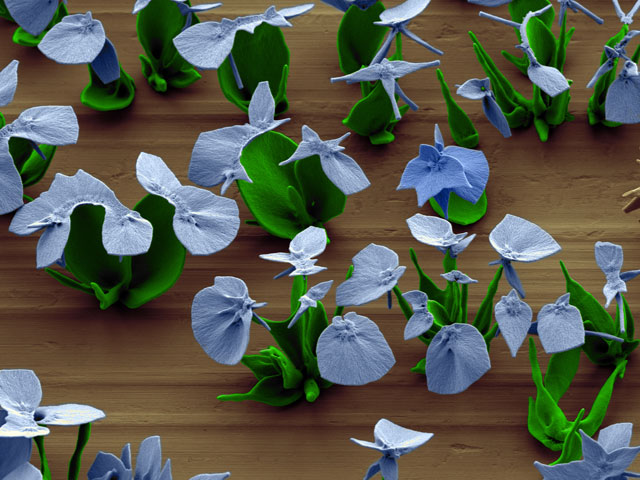
Moon Flowers - Laura Hendriks/Wim Noorduin